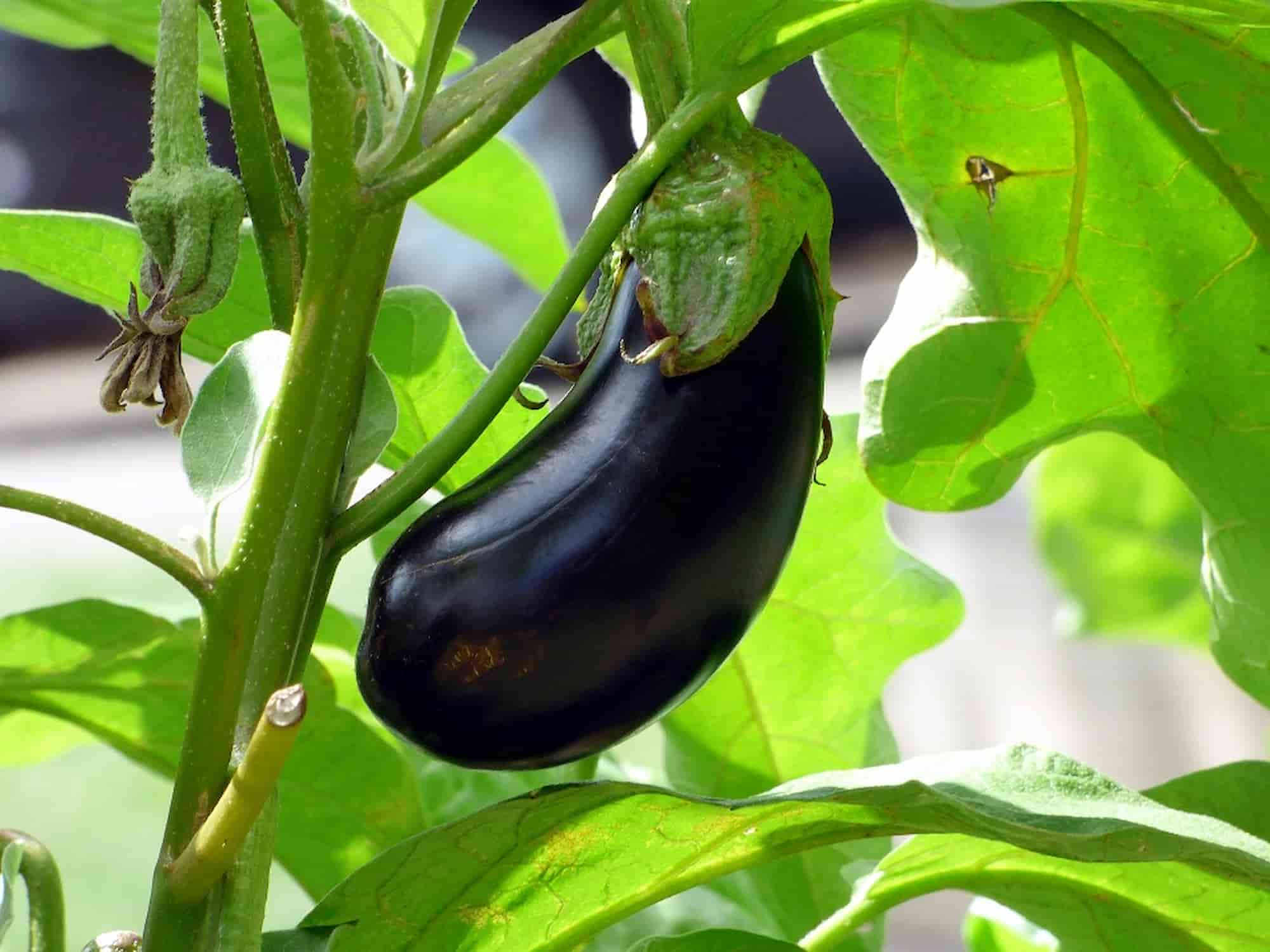
Eggplant: diseases and pests
to better prevent and combat them
Contents
Sun vegetable par excellence, the aubergine (Solanum melongena) is not difficult to grow, provided it is given a sunny location, warmth, and water. Lots of water! This plant from the Solanaceae family thrives under the UV rays of the South but can be grown anywhere, including on a balcony or terrace due to its small size and upright habit. If these growing conditions are met, the gardener will be lucky enough to harvest beautiful fruits (yes, the aubergine is a fruit just like the tomato!) in various colours, shapes, and sizes, from July to October. However, if the aubergine does not receive its doses of sun and water, it can quickly be attacked by numerous diseases and pests that may cause damage and compromise the harvest. Discover with us the main enemies of the aubergine and the various natural treatments, both preventive and curative.
Downy mildew
Description
Downy mildew is a mycosis transmitted by the fungus Phytophthora parasitica that mainly develops during humid years. The fungus overwinters, and the disease spreads through spores carried by rain and wind.
Symptoms
Yellowish-white spots appear on the upper side of the leaves. They grow if a certain level of humidity is maintained. On the underside, a white, sometimes greyish-purple, fluff or down develops. The tips of the leaves eventually die off.
Prevention
- Avoid planting too closely to ensure good aeration of the aubergine plants.
- Avoid overhead watering and prefer watering at the base.
- Properly apply crop rotation.
- A spray of horsetail decoction, diluted to 20%, every 15 days or sodium bicarbonate (3 to 10 grams per litre of water).
Natural treatments
- Remove diseased plants by burning them, including any fallen debris.
- A spray of Bordeaux mixture will help to slow the disease.
powdery mildew
Description
It is the fungus Leveillula taurica that causes powdery mildew on aubergine, a disease transmitted by rain and wind that carry the spores. It attacks the aerial parts of the plant, starting with the basal leaves. It can develop in dry weather.
Symptoms
Small white spots appear on the leaves, then the fungus invades the upper and lower surfaces of the leaves with a white mycelial felt. The leaves dry out prematurely.
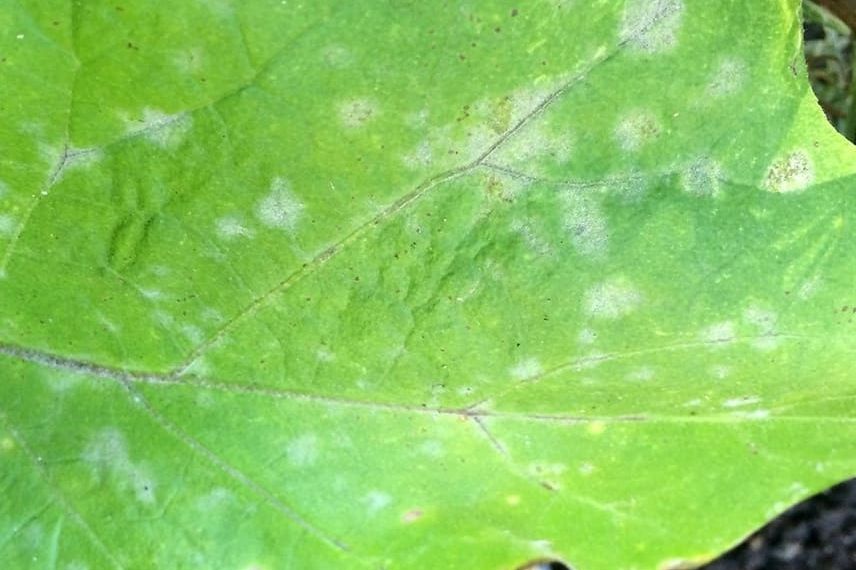
The first signs of powdery mildew attacks are small white spots appearing on the leaves
Prevention
- Avoid planting too closely to ensure good air circulation between plants.
- Choose resistant varieties
- Avoid fertilisers that are too rich in nitrogen
- Avoid overhead watering
Natural treatments
- Carefully remove affected parts
- Treat with a spray of diluted horsetail decoction at 20%.
Discover other Eggplant seeds
View all →Available in 1 sizes
Available in 1 sizes
Available in 1 sizes
Available in 1 sizes
Available in 1 sizes
Available in 1 sizes
Available in 1 sizes
Available in 1 sizes
Available in 1 sizes
Verticillium wilt or verticillium wilt disease
Description
Verticillium wilt is a disease to which vegetable plants in the Solanaceae family are highly susceptible, caused by the fungus Verticillium dahliae. As it affects the plant’s vascular system, the sap can no longer circulate. This is primarily a spring disease that occurs during fruit formation in humid conditions.
Symptoms
The basal leaves soften and wilt, then turn yellow, often on one side of the midrib. They then become beige to brown before completely undergoing necrosis. They remain attached to the stem.
Prevention
- Properly apply crop rotation
- Ensure good soil drainage
- Carry out preventive sprays of horsetail or garlic decoction
- Avoid excess nitrogen-rich fertiliser
- Thoroughly clean the soil of various crop residues, including weeds
Natural treatments
- Systematically remove contaminated plants and burn them.
- Thoroughly disinfect tools that have come into contact with infested plants.
Read also
Choosing auberginesAlternaria blight or black rot
Description
Once again, the alternaria disease is caused by a fungus, more specifically Alternaria dauci. This fungus thrives in warm, humid conditions from April to October. It survives throughout the winter in plant debris in the soil and can persist for 6 to 7 years.
Symptoms
Round, brown then black spots appear on the leaves. The tissues dry out or rot depending on the weather. The leaves eventually fall off. The fruits are also affected: round, black spots emerge. They become increasingly larger and deepen.
Prevention
- Space the young plants to ensure better air circulation
- Properly implement crop rotation
- Avoid planting aubergines next to tomatoes and potatoes, which are also susceptible to alternaria disease
- Avoid overhead watering and prefer watering at the base
- Apply sprays of horsetail or garlic decoction every 5 days for 10 days.
Natural treatments
- Carefully remove diseased aubergine plants by burning them
- Collect and destroy any plant debris left on the ground.
Grey mould or Botrytis
Description
Grey mould is a fungal disease caused by the fungus Botrytis cinerea. It thrives in conditions of high humidity and low light, often in greenhouses. It also affects weak plants.
Symptoms
A grey fluff develops on the affected organs, including stems, flowers, petioles of leaves, and fruits. The tissues die, and large brown-red spots appear on the leaves and fruits, which then perish.
Prevention
- Avoid excessive nitrogen fertilisation
- Ensure good soil aeration
- Avoid overhead watering
- Plant garlic between aubergine crops
- Apply horsetail decoction sprays
Natural treatments
- Remove and burn all affected plants
Fruit anthracnose
Description
Fruit anthracnose is caused by the fungus Colletotrichum melongena and is favoured by humid weather.
Symptoms
Small cylindrical lesions appear on the leaves and black circular spots on the fruits. The leaves wilt and the fruits rot.
Prevention
- Remove plant debris from the soil
- Spray with horsetail decoction
Natural treatments
- Systematically remove contaminated fruits
Cercospora leaf spot
Description
Cercospora leaf spot is a fungal disease caused by the fungusCercospora melongenae favoured by high temperatures combined with the presence of moisture on the leaves.
Symptoms
Round spots appear on the leaves, brown in colour surrounded by a slightly yellowish halo. Gradually, the spots spread and the leaves yellow and progressively undergo necrosis.
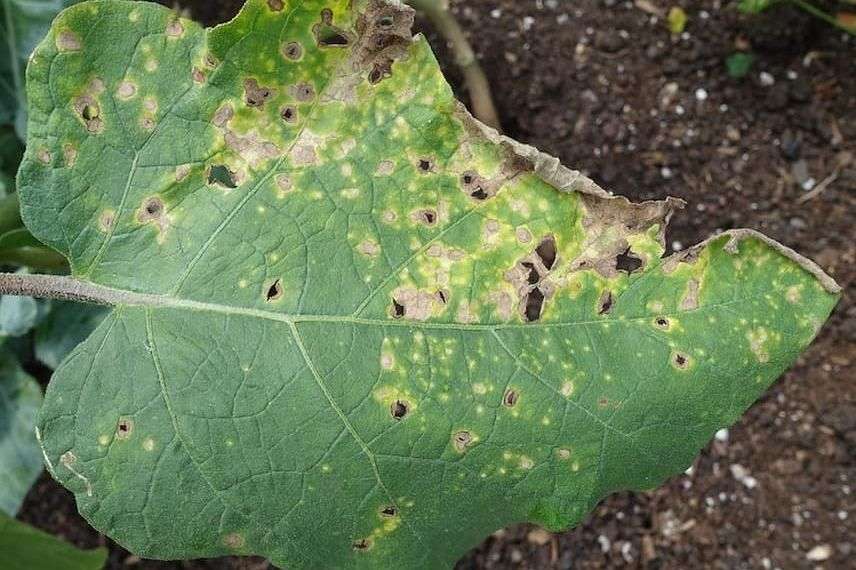 Brown spots sometimes surrounded by a yellowish halo are characteristic of cercospora leaf spot.
Brown spots sometimes surrounded by a yellowish halo are characteristic of cercospora leaf spot.
Prevention
- Avoid overhead watering
- Collect all plant debris at the base of the aubergines after the harvest
Natural treatments
- Pull up contaminated plants and burn them
Pests of the aubergine
Several pests or insects can attack the aubergine. Firstly, aphids have the ability to move from one species to another. These piercing and sucking insects feed on the sap of the leaves.
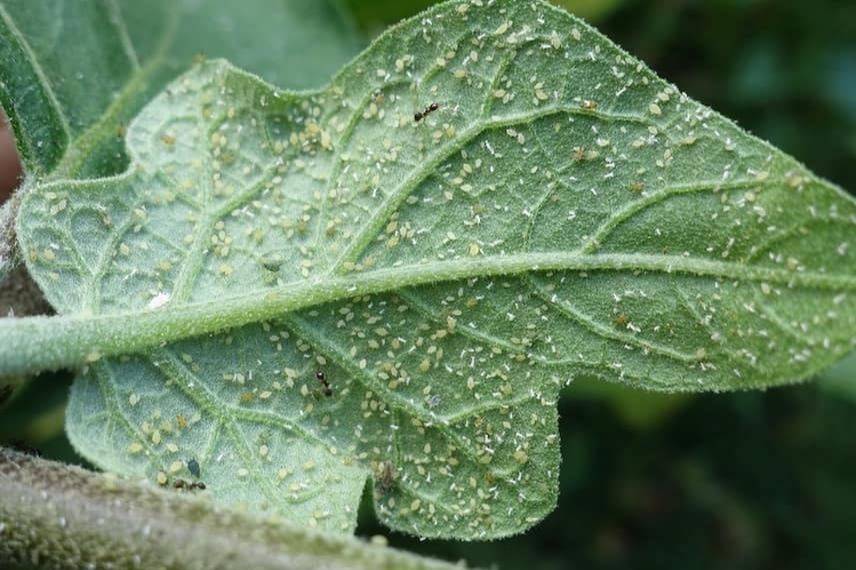
Aphids on the underside of aubergine leaves
In themselves, they do not pose a real danger to the plant, but they can encourage the development of sooty mould. Other pests are quite commonly found on aubergines:
Red spider mites
Description
Quite difficult to see, red spider mites are arachnids, specifically tetranychids, that appear with a warm, dry spring. They suck the sap from the plants they attack, generally concentrating under the leaves.
Symptoms
The leaves become covered with small yellow spots and then discolour to a silvery colour. Other leaves may be perforated or wilted. Very fine webs appear between the leaves.
Prevention
- Lightly mist the foliage regularly if the weather is very dry. Mulch the soil to maintain some moisture
- Spray a decoction of horsetail or nettle manure
- Limit fertilisers that are too rich in nitrogen
- Encourage natural predators such as lacewings or earwigs
Natural treatments
- Spray diluted rosemary essential oil in water
- Apply a diluted garlic decoction at 30% on the plant
- Cut off infested leaves and burn them.
Leaf miner
Description
These miners are fly larvae that burrow galleries in the foliage of aubergines. Egg-laying occurs in spring during mild weather. Once well-fed, the larvae transform into pupae and then into adults. And the cycle begins again…
Symptoms
The leaves are marked with white or brownish streaks. The leaves eventually curl, turn brown, and fall off.
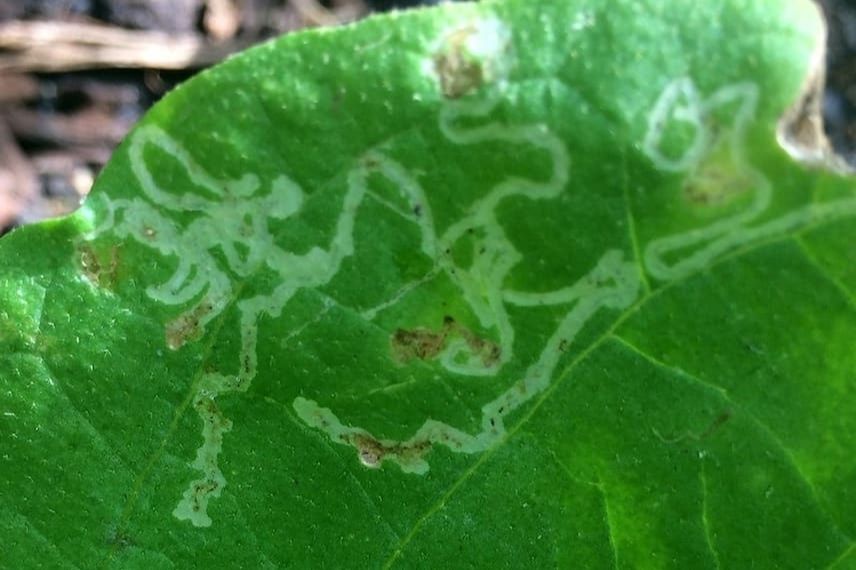
Leaf miner larvae burrowing galleries in the leaves
Prevention
- Implement crop rotation
- Collect plant debris from the ground and weeds
- Remove affected leaves as soon as the first streaks appear
Natural treatments
- Spray a decoction of tansy
Colorado potato beetle
Description
Both the adults and larvae of Leptinotarsa decemlineata eat the leaves and can consume the entire leaf surface of an aubergine in 2 or 3 days. By late September, the beetles hibernate in the soil, at a depth of 10 to 15 cm. They only attack solanaceous plants.
Symptoms
The leaves are eaten, and sometimes only the veins remain.
Prevention
- Implement crop rotation
- Plant beans or garlic near aubergines as they are excellent repellents against Colorado potato beetles
Natural treatments
- Spray nettle, horseradish, or tansy manure
- Manually collect adult beetles and larvae
- Subscribe!
- Contents
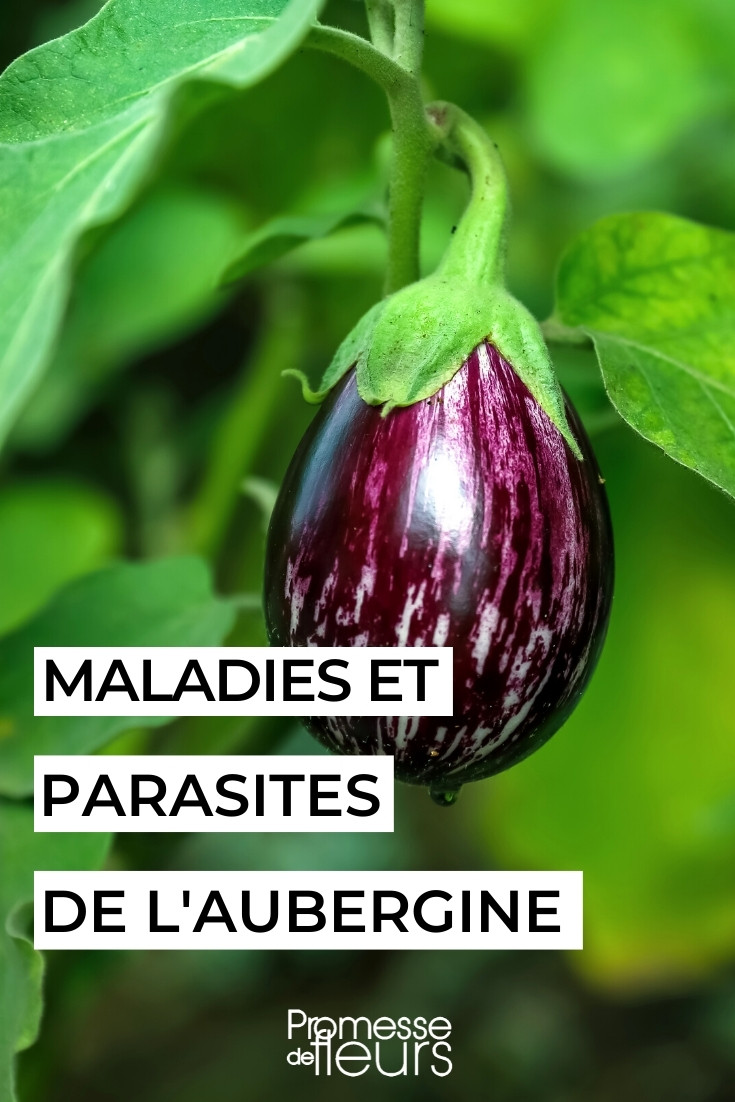































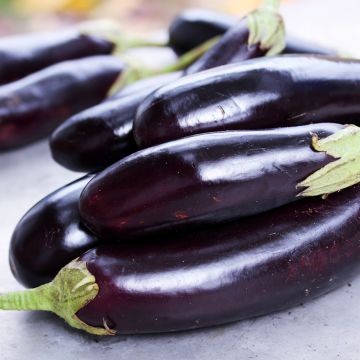
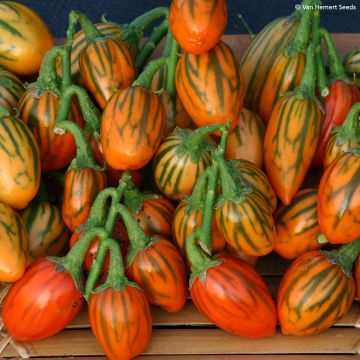
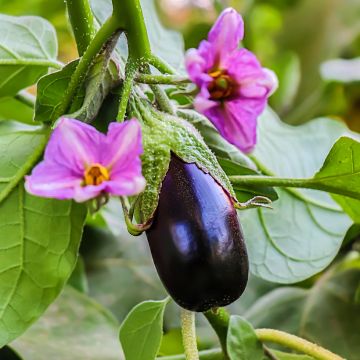
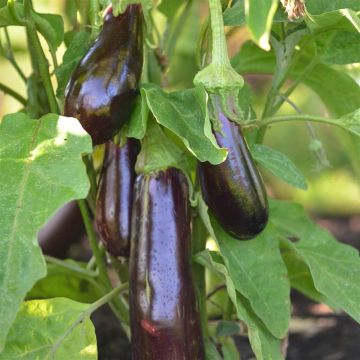
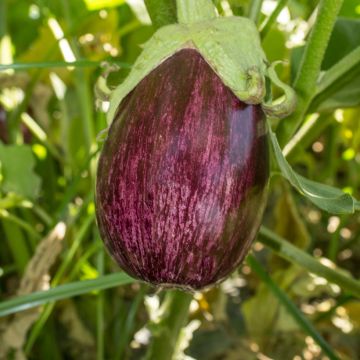
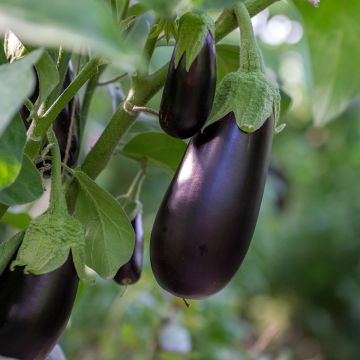
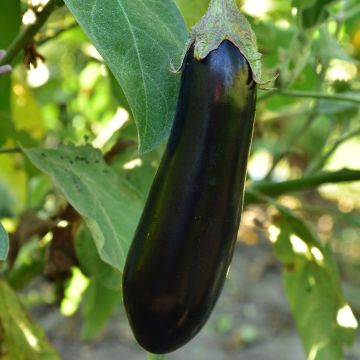
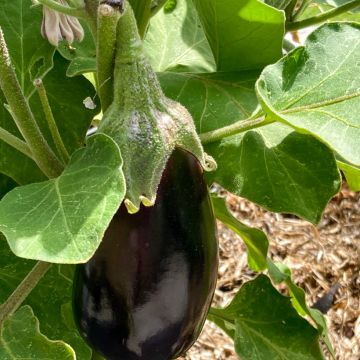
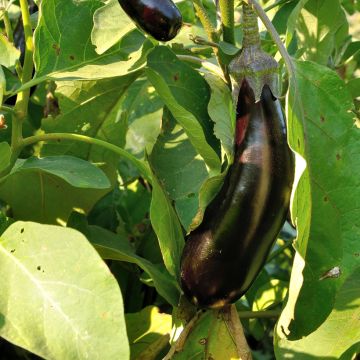
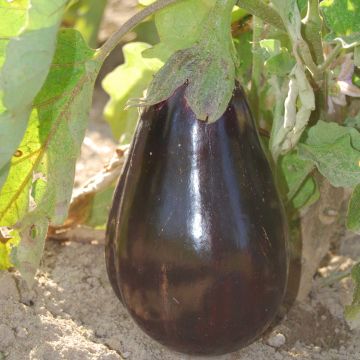
Comments